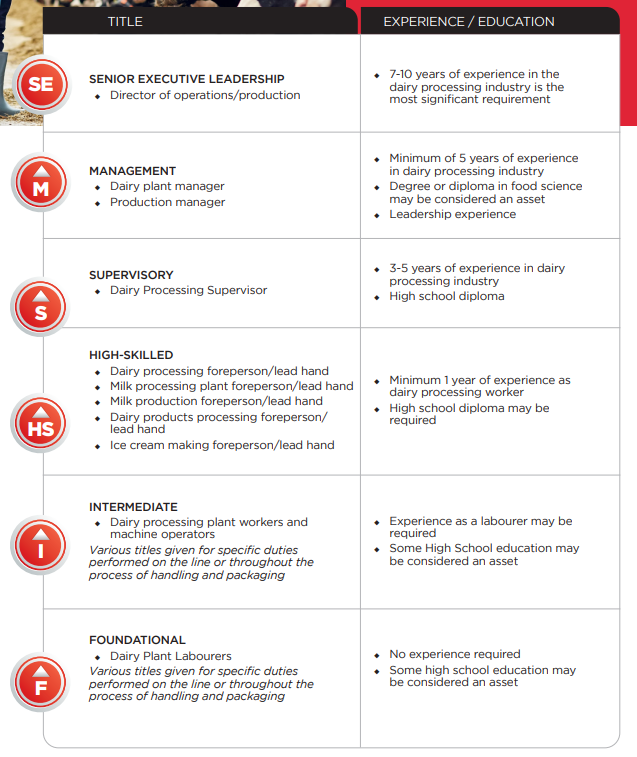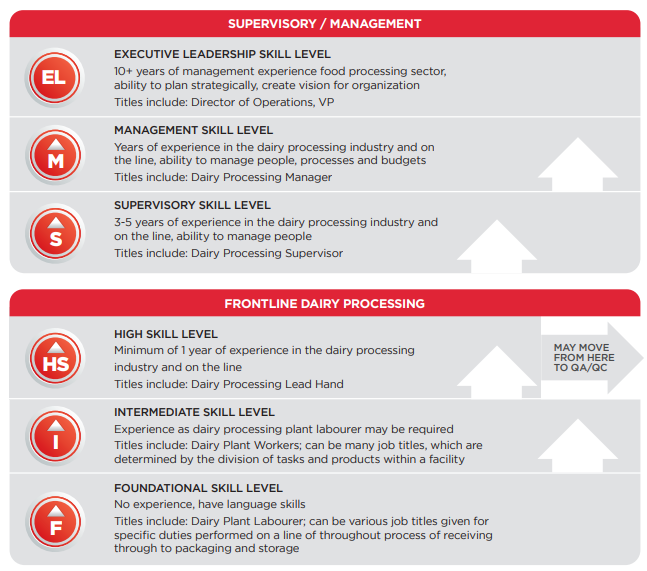
Canada’s Agri-Food sector is a significant contributor to our nation’s economy and was recently identified as one of Canada’s top growth industries over the next 10 years. Despite this, the sector continues to face a critical labour shortage that, if left unresolved, will impede the industry’s growth, employment opportunities, and overall sustainability.
To address this shortage, Food Processing Skills Canada (FPSC) has embarked upon a landmark Labour Market Information Study (LMI). In its finality, the LMI will provide government and decision-makers with the research needed to make real regulatory change that will bring both prosperity and opportunity to the sector.
Understanding Your Career Pathway in Industrial Baking lays crucial groundwork for the LMI by defining occupations and career pathways in the industrial baking sector. Utilizing this data, the LMI will take in-depth reviews of each career pathway, and their specific challenges and opportunities.
This document provides practical information about the career pathways available for workers in the industrial baking industry.
In a time when attracting and recruiting workers is crucial to keeping up with demand, the career pathway can be instrumental in educating potential workers about the opportunities and career paths within the sector.
The career pathway is a valuable tool for employers to attract, recruit, and retain productive and skilled workers.
Here’s the text in plain format:
To learn more about the career paths in dairy processing, we:
The career ladder for dairy processing illustrates the progression of occupational levels from foundational skills to executive management. The career ladder is comprised of six (6) levels. The typical entry point into the dairy processing industry is at the Foundational Skill Level. With work experience and training (often offered on-the-job), workers often progress upward on the career ladder.
Foundational Skill Level positions are often entry-level roles or jobs that require no prior experience or training to work in a dairy facility. While a high school diploma or equivalent may be preferred, it is not typically required by most businesses. Training for foundational skill level jobs most often occurs on the job, and job shadowing is an important component of this training.
Labourers may also assist with packaging and support the work of machine operators (semi skill level workers) by feeding cartons and packaging materials into machinery, etc.
Semi Skill Level workers typically have 6 months to 1 year of experience working in dairy processing facilities. While a high school diploma is often preferred, it may not be a requirement. Workers in this job class typically receive training on the job, including WHMIS, food safety, and food safety management system training, such as HACCP. Workers who start in Foundational Skill Level positions often progress to Semi Skill Level positions as they gain additional experience and training.
High Skill Level Workers typically have at least 1 year of experience (typically 1-3 years) in dairy processing and are able to perform the range of tasks that are completed on the production/processing line. A high school diploma is considered an asset. Additional training related to supervising workers may be provided in-house. Workers receive WHMIS, food safety, and food safety management system training. Workers in Semi Skill Level positions often advance to High Skill Level positions as they gain additional experience and training.
Supervisory Skill Level workers typically have 2-3 years of experience on the line of a dairy processing facility. Additional training in production management, supervising, and employee management may be required and provided by the company. A high school diploma or equivalent is often required; additional post-secondary education is an asset. It is typical for supervisors to begin at the Foundational Skill Level, and through experience and additional training, move up into supervisory roles. Supervisors must complete WHMIS, food safety, and food safety management system training.
Management Skill Level workers typically have a minimum of 5 years of supervisory experience within the dairy processing industry. Leadership experience is considered an asset. A postsecondary education may be required or considered a strong asset. Additional training in management is often required of job incumbents. Managers require WHMIS, food safety, and food safety management system training.
Senior Executive Leadership Skill Level workers typically have extensive experience (e.g. 7-10+ years) within the dairy processing industry, or within other food and beverage processing facilities. They are responsible for managing corporate affairs and leading the strategic direction and vision of the overall organization. Skills in organizational management and business administration are critical.


The level of automation within a dairy processing facility has a direct impact on the skill level and cross-training of dairy processing operators. Research indicates that machinery and equipment used for various steps of dairy processing often require the same skills for operation, including: programming and equipment interface; reading settings and output data; monitoring machine operation; and troubleshooting minor issues. In plants where automated equipment is used for most steps and processes, operators may be moved from station to station depending on need and production targets. Operations that are more manual (less automated equipment) typically train employees to work at specific processing points or with specific products. Manual operations are also often smaller operations; therefore, it is not uncommon for workers in small plants to specialize in a certain area, product, or process.
New employees, with limited or no experience in dairy processing, are typically assigned to helper or labourer positions, providing support and assistance to dairy processing operators or working on the packaging line. New employees are often assigned to product packaging and/or mastering positions, and then are introduced to various aspects of processing under the guidance of experienced operators. Helpers/labourers can expect to move into Operator positions once they have received on-the-job training and are most often partnered with an experienced operator before performing the job independently.
While Milk Pasteurizer and Raw Milk Receiver are classified under the NOC Code 9461, research indicates that the Pasteurizer Operator, Raw Milk Receiver, and CIP Operator are more high-skilled Operator positions that require additional experience and expertise to perform. Subject Matter Experts indicated that the best Operators are selected for these higher skilled operations positions. Pasteurizer Operators, CIP Operators, and Raw Milk Receivers require acute document use and numeracy skills; are required to communicate and collaborate with on-site inspectors; require enhanced thinking skills and perform more high-risk, critical operations in relation to HACCP and food safety.
Vertical movement up the Processing Career Ladder is common – starting from entry-level labourer positions to processing lead hands and supervisors. Lateral movement, from the warehouse and logistics department (entry-level positions) into Labourer, and in some cases Machine Operator, positions is also common. Skilled Processing Leadhands may qualify for production quality control positions. The QC positions, while still considered processing/production positions, involve completing quality control processes – such as testing and inspection – on the production floor. These individuals often still report to the production supervisor, but also communicate and collaborate with the Quality Assurance/Quality Control department.
| Level/NOC | Title | Description/Duties | Experience/Education |
|---|---|---|---|
Executive Leadership Skill Level
|
|
|
|
| Level/NOC | Title | Description/Duties | Experience/Education |
|---|---|---|---|
Management Skill Level
|
|
|
|
| Level/NOC | Title | Description/Duties | Experience/Education |
|---|---|---|---|
Supervisory Skill Level
|
|
|
|
High Skill Level
|
|
|
|
| Level/NOC | Title | Description/Duties | Experience/Education |
|---|---|---|---|
Intermediate Skill Level
|
|
|
|
| Level/NOC | Title | Description/Duties | Experience/Education |
|---|---|---|---|
Foundational Skill Level
|
|
|
|